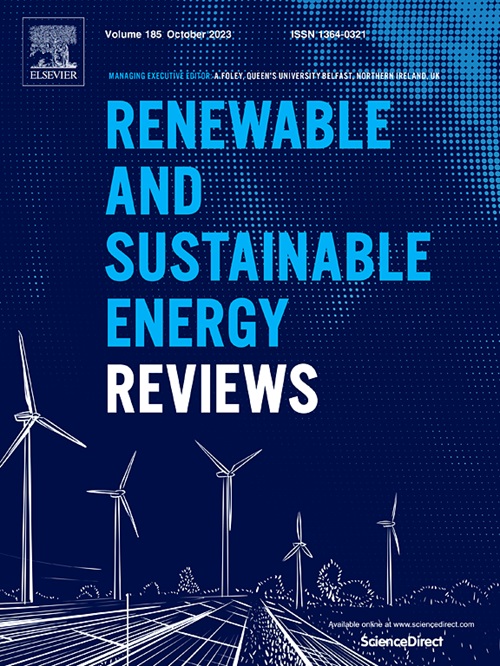Evaluating financial implications of renewable energy for climate action and sustainable development goals
IF 16.3
1区 工程技术
Q1 ENERGY & FUELS
引用次数: 0
Abstract
The global issue is the urgent need to shift to renewable energy sources to mitigate climate change and sustainable development. China, as the world's largest greenhouse gas emitter, is under increasing pressure to transition to renewable energy sources to meet global climate targets, including its commitment to peak carbon emissions by 2030 and achieve carbon neutrality by 2060. This shift is necessary to achieve Sustainable Development Goals (SDGs), particularly SDG 7 (Affordable and clean energy) and SDG 13 (Climate action). Adopting renewable energy presents a number of significant challenges. Therefore, assessing the financial impact of renewable energy adoption is essential for driving climate action and achieving SDGs. This study identified six criteria, twenty-four sub-criteria, and six financial policy strategies for renewable energy development. This study employs fuzzy-based multi-criteria decision-making methods, specifically the Analytical Hierarchy Process (AHP) and VIekriterijumsko KOmpromisno Rangiranje (VIKOR), to analyze and prioritize key criteria and policy strategies in addressing the financial complexities of China's renewable energy transition. The findings of fuzzy AHP highlight financial risk, social benefits, and economic viability as crucial criteria in evaluating the financial implications of renewable energy adoption in China. Besides, the results of fuzzy VIKOR indicate that subsidies and grants, green finance initiatives, and public-private partnerships are the most significant financial policy strategies. This research provides direction for policymakers, investors, and industry stakeholders aiming to align financial sustainability to ensure a sustainable and resilient energy future.

求助全文
约1分钟内获得全文
求助全文
来源期刊

Renewable and Sustainable Energy Reviews
工程技术-能源与燃料
CiteScore
31.20
自引率
5.70%
发文量
1055
审稿时长
62 days
期刊介绍:
The mission of Renewable and Sustainable Energy Reviews is to disseminate the most compelling and pertinent critical insights in renewable and sustainable energy, fostering collaboration among the research community, private sector, and policy and decision makers. The journal aims to exchange challenges, solutions, innovative concepts, and technologies, contributing to sustainable development, the transition to a low-carbon future, and the attainment of emissions targets outlined by the United Nations Framework Convention on Climate Change.
Renewable and Sustainable Energy Reviews publishes a diverse range of content, including review papers, original research, case studies, and analyses of new technologies, all featuring a substantial review component such as critique, comparison, or analysis. Introducing a distinctive paper type, Expert Insights, the journal presents commissioned mini-reviews authored by field leaders, addressing topics of significant interest. Case studies undergo consideration only if they showcase the work's applicability to other regions or contribute valuable insights to the broader field of renewable and sustainable energy. Notably, a bibliographic or literature review lacking critical analysis is deemed unsuitable for publication.
 求助内容:
求助内容: 应助结果提醒方式:
应助结果提醒方式:


